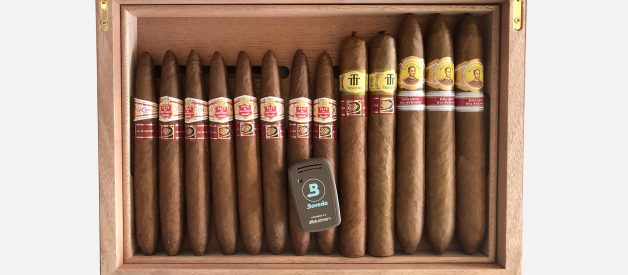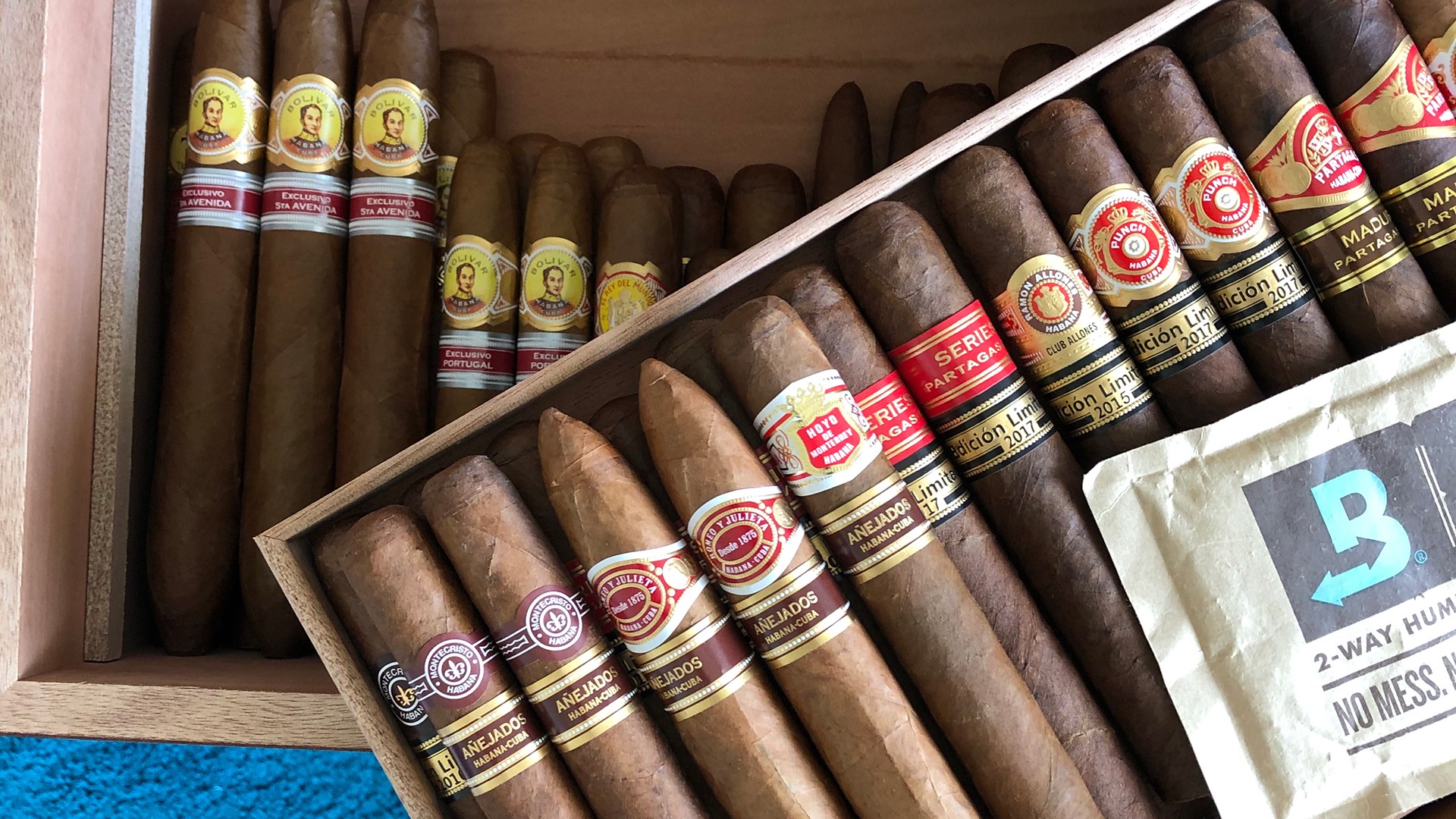
You just got your new humidor, didn?t you? Well good for you. Now, don?t just throw your cigars inside and forget them. You still have to perform some tasks before doing that. This article?s intent is to help you along the way. Cigars are live creatures that need care and attention once in a while. If you want to keep your cigars healthy and ready to smoke you have to be aware of some basic rules to follow.
Essentially, cigars need two very basic things: humidity and temperature.
Humidity.
Too much humidity and your cigars will become un-smokeable. Too little humidity and your cigars will only produce smoke and they will not taste of anything. Simple, right? That?s because the principle is right, but keeping things this way is crucial for good storage.
Cigars should be kept, as constantly as possible, between 65% and 72% humidity for better storage. In this interval, you are safe (most of the times). That is why cigar humidors exist, to give your cigars a good place to spend their remaining life before dying in your lips. Good humidors ensure that the humidity level stays at a constant humidity level. However, please don?t buy a humidor and throw the cigars inside as they will dry faster than you can say ?aficionado?.
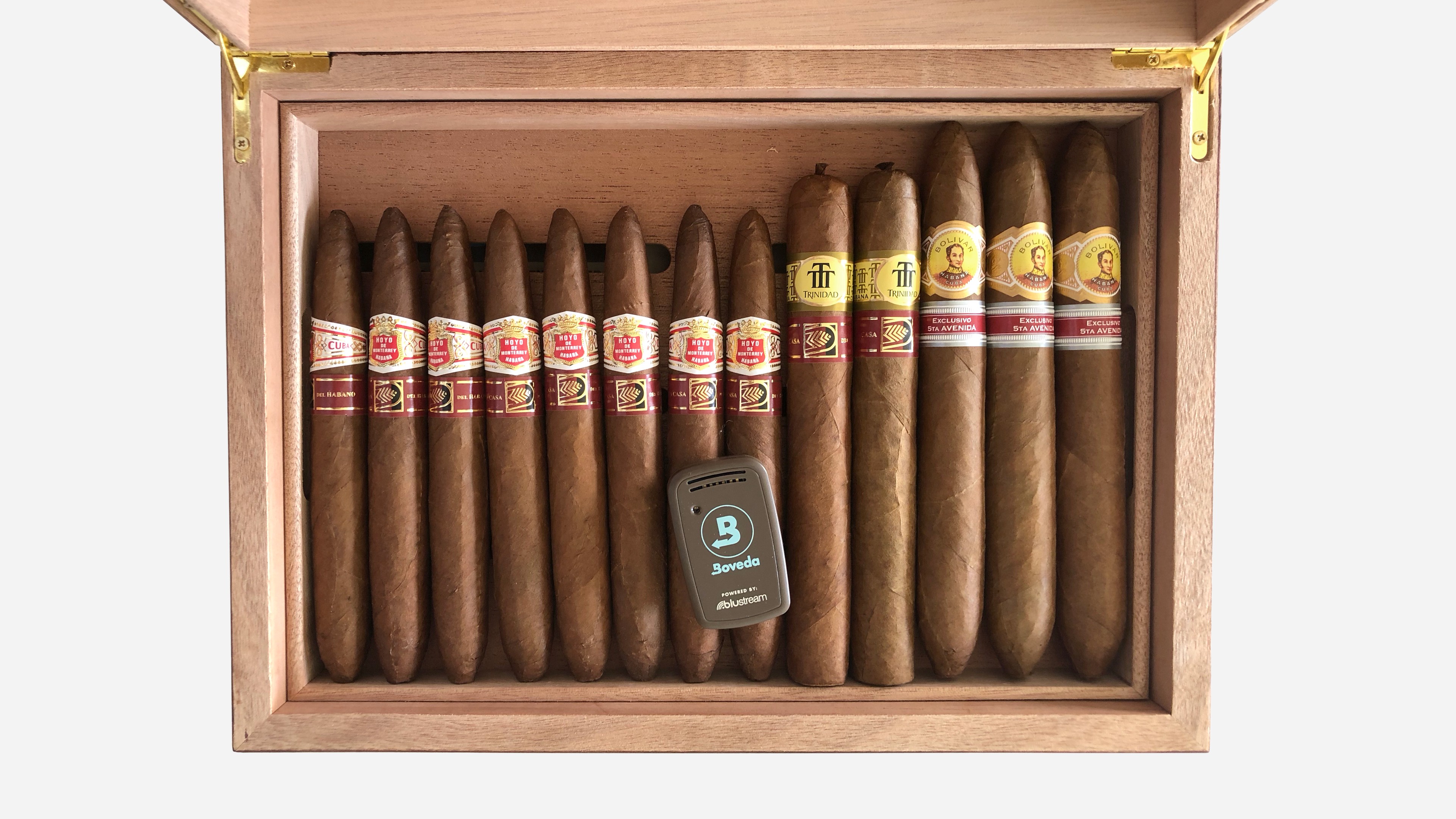 Humidor of Cuban cigars with Boveda Butler technology
Humidor of Cuban cigars with Boveda Butler technology
Humidors need to be seasoned before they can be used. And let?s keep things practical, let?s forget the old beads, distilled water and sponges to soak up the walls of the humidor. Let?s agree to use Boveda. It just works and as they say: ?set it and forget it? (We were not endorsed by Boveda, we just really like the product they are putting out).
To season your humidor, you just have to buy the 84% humidity pack, place it inside your empty humidor and leave it there for 2 weeks. If you have a big humidor, throw in one 84% Boveda pack for every 25 cigars. After 2 weeks, all the wood inside your humidor should be ready to receive your cigars. When you put the cigars inside, place a 69% or 72% humidity pack in and you?re set. The proportion is the same, one 60gram pack for every 25 cigars or one 320g pack for every 50-150 cigars. If you live in a very dry place you will need to pay extra attention to your humidor and feel the Boveda packs. If they are rock hard, replace them with brand new ones.
This is why we like Boveda, they single-handedly destroyed every outdated solution for ?domestic? humidification in the market.
Let?s now look at some of the consequences of dry (or under-humidified) cigars:
Wrapper cracks ? the cigar wrapper is usually the more fragile component of your cigars and also the one that is most exposed at all times. If the cigar is too dry, it will lose its oils that provide elasticity to the leave, making it crack with a gust of wind.
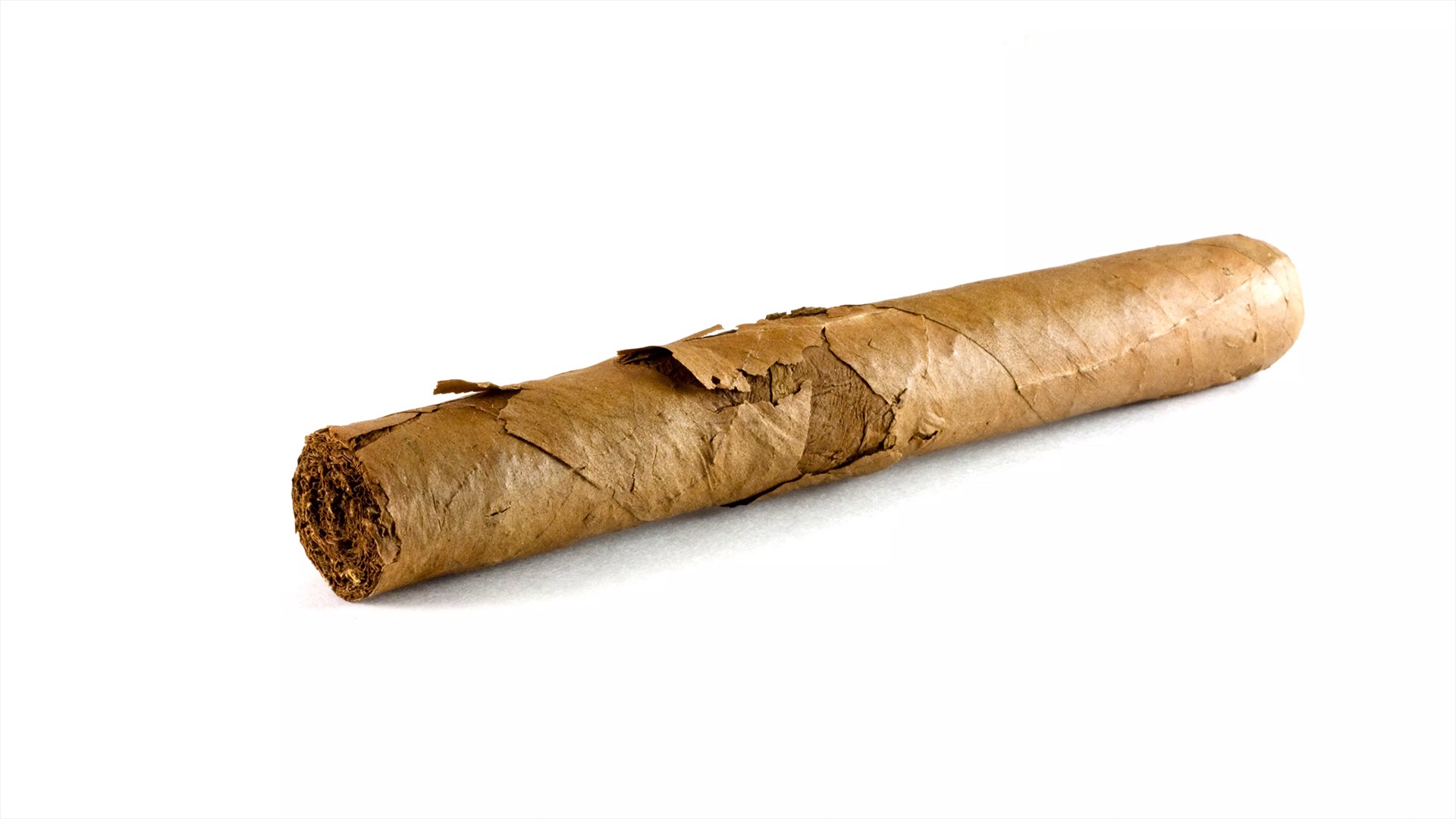 Cracked wrapper ? credits: Simply Cigars
Cracked wrapper ? credits: Simply Cigars
No flavor ? dry cigars lose their oils and there is where all the flavor is. Distinguishing a good premium cigar from a gas station one is almost impossible if they are dry.
Bitter taste ? all the sugars of a cigar are gone at this point, which is the same as saying that all the flavor disappeared. You are basically smoking dried leaves.
After reading this, you might ask: ?Can dry cigars be revived?? They can, but they will never be the same. We?ve tried it and, believe it or not, they are smokeable. But from being smokeable to being enjoyable is quite a stretch.
On the other side of the humidity chart, there are also over-humidified cigars. These are the consequences that might occur:
Takes forever to lit ? Because of the excess moisture on the cigar, fire doesn?t catch up the way it is supposed to. You will immediately know if a cigar is over-humidified if your friends are already smoking and you are still struggling to light it up.
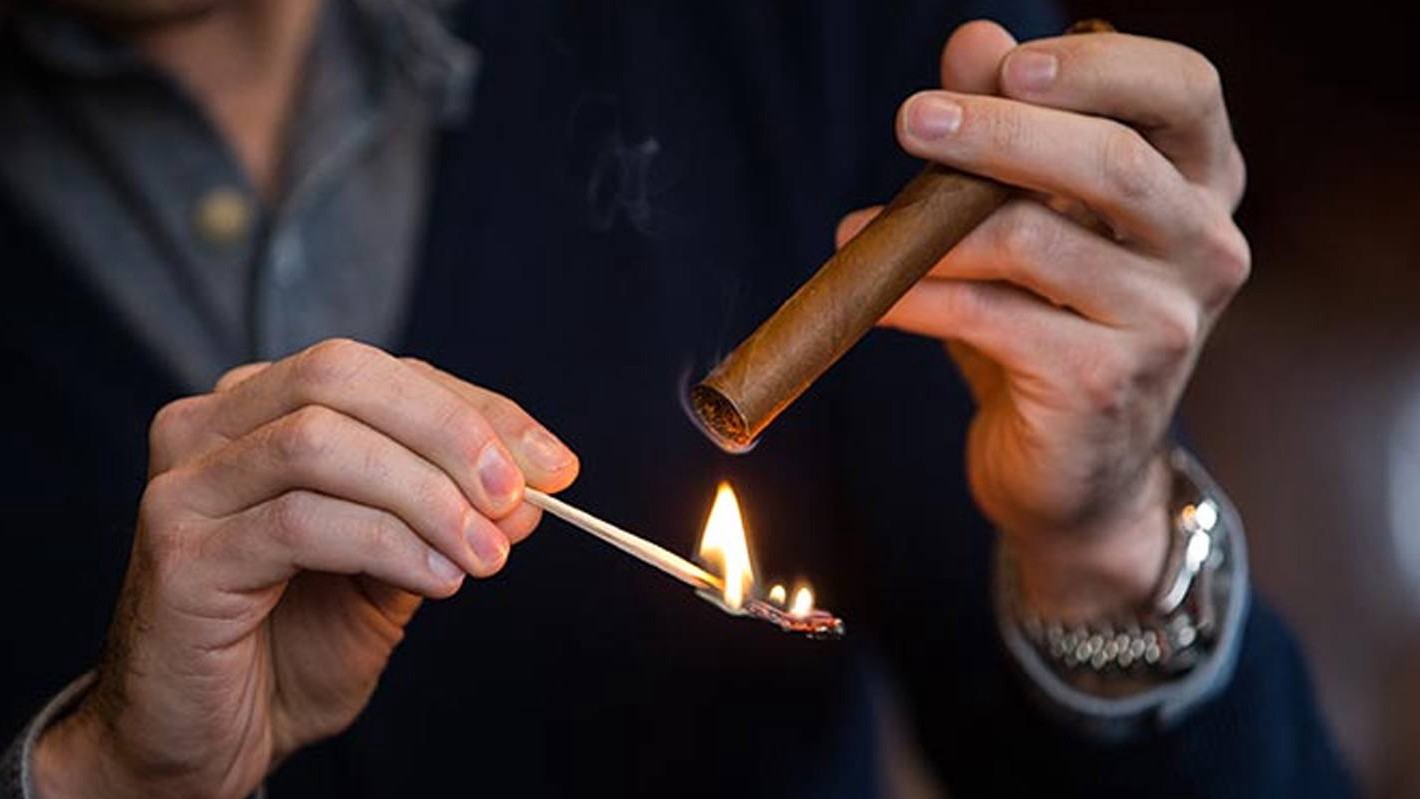 Taking forever to lit can be a sign of over-humidification. Courtesy of hespokestyle.com
Taking forever to lit can be a sign of over-humidification. Courtesy of hespokestyle.com
Tend to go out more ? Sometimes, the process of lighting the cigar can force the excess moisture to evaporate on the tip of your cigar and you can light it in an acceptable time, fooling you that the cigar is properly humidified. However, it will go out very often during your smoke session. This will cause a re-light and another and another? making your cigar bitter and bitter every time.
Burn issues ? Because the wrapper is usually the thinner layer of a cigar, it will dry faster than the binder and the filler. This will cause that, during your smoke, the sides will burn a lot faster than the center. You will notice that when your ash falls and you end up revealing an inverted cone of incandescent tobacco.
Cracked wrapper ? excess moisture expands within the filler of the cigar like puff pastry and forces the wrapper to break, ruining your cigar.
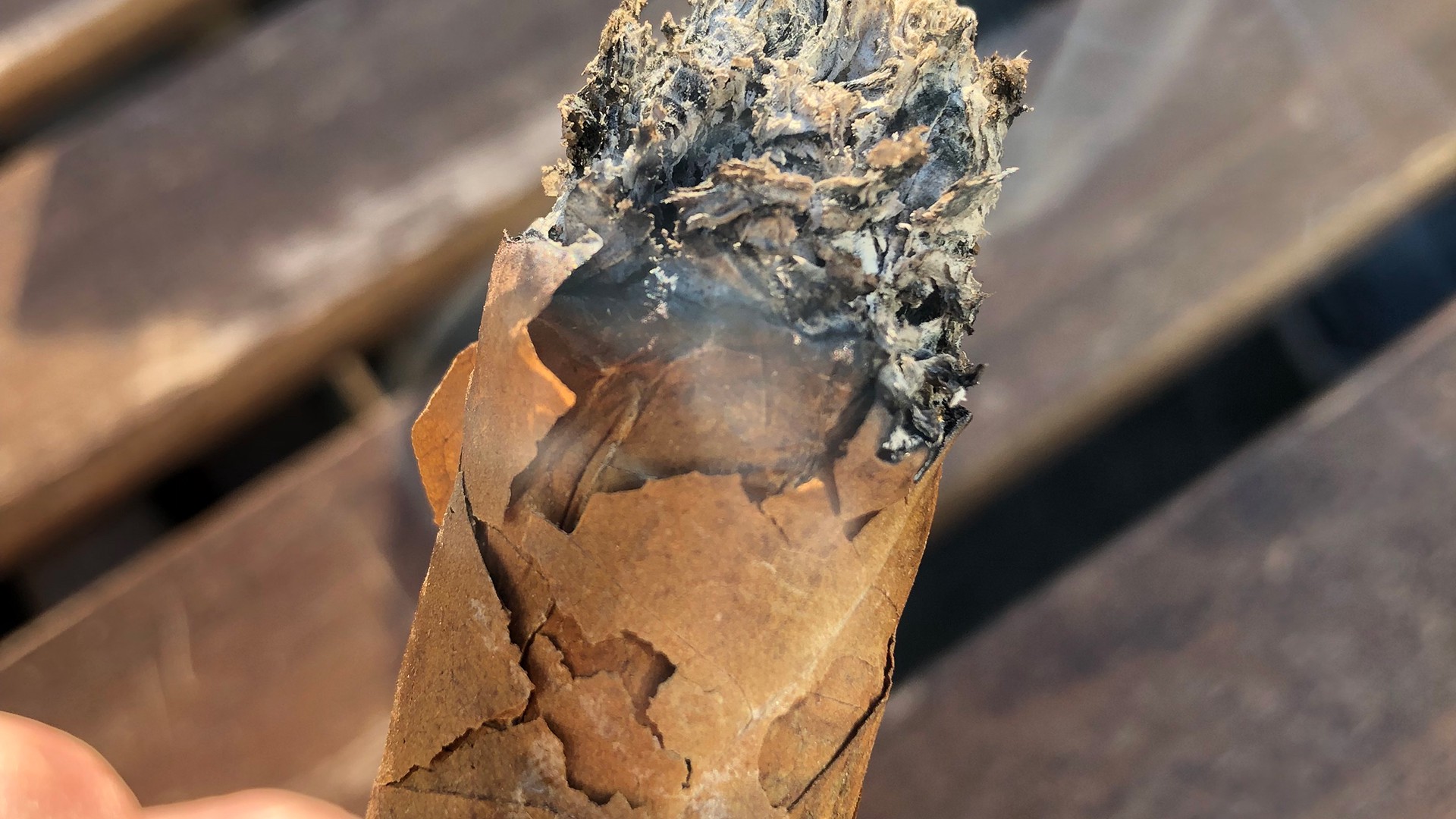 An over-humidified cigar with a cracked wrapper
An over-humidified cigar with a cracked wrapper
Mold ? Possibly, the worst aficionado nightmare (right next to cigar beetles). It is caused when the combination of humidity and temperature gets too high. As far as you move up from the 70% humidity mark, the higher the chances are of mold forming on your cigars. Temperature also plays an important role in this phenomenon, usually in the same proportion as moisture: the more you have it, the worse it gets.
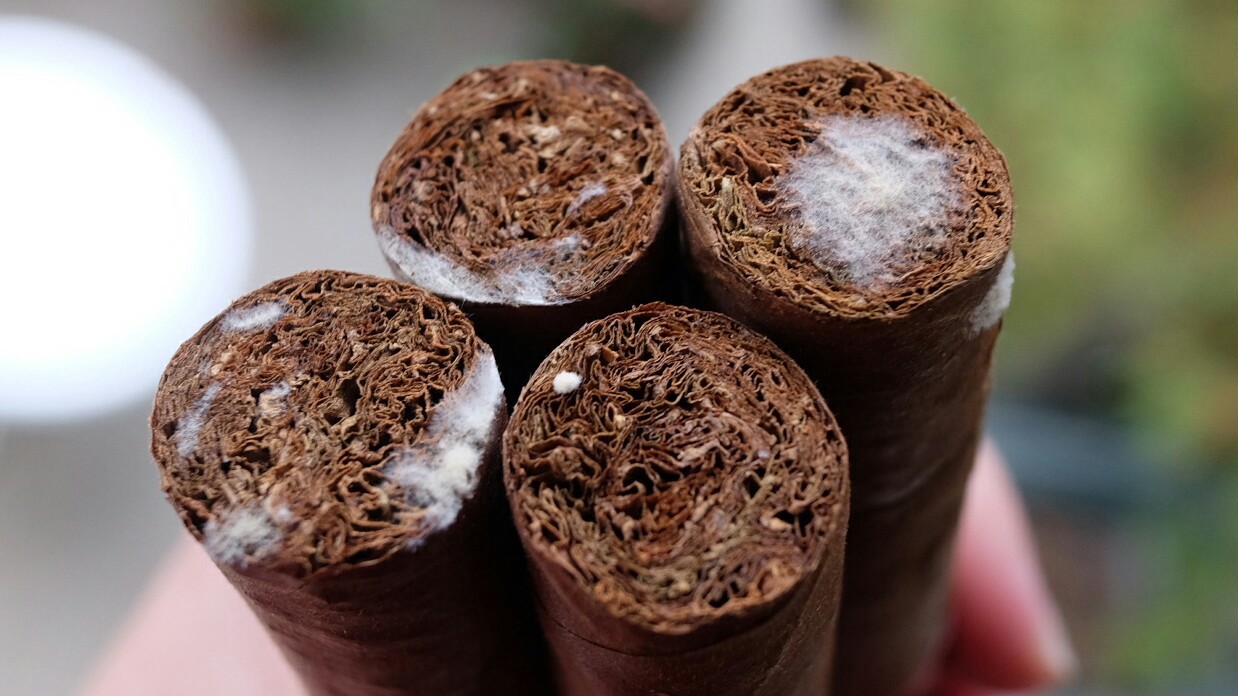
Cigar beetles ? When combined with high temperatures, the small beetle eggs can hatch and the larvae that come out of them will start eating your cigars from the inside out. These eggs are completely harmless to us and they are a consequence of every natural leaf product. They are actually a sign that no chemicals were added to the process, which is obviously a good thing.
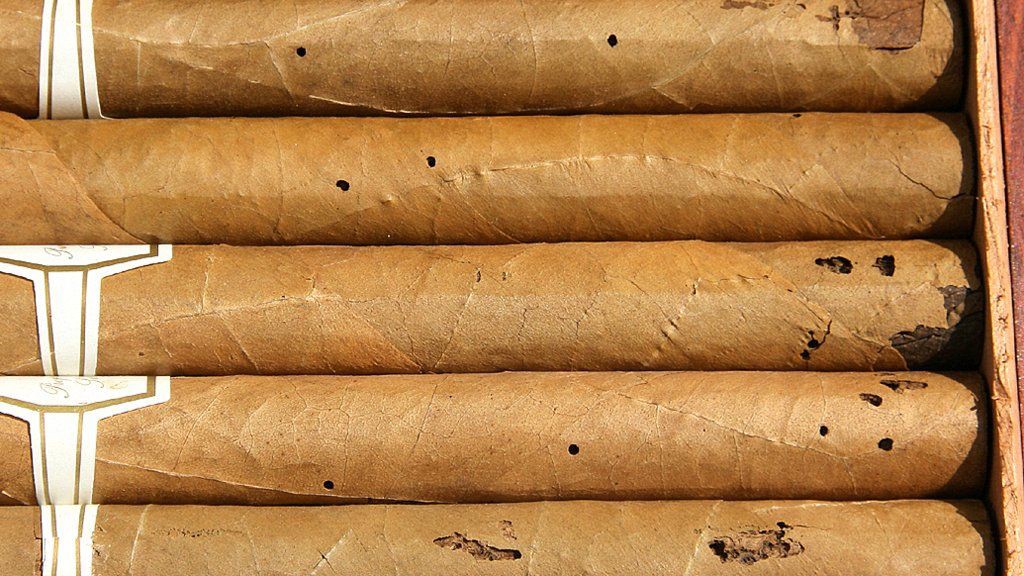
As we said in the beginning, temperature plays a very important role in your cigar storage environment.
Temperature.
Too cold and your cigars can break with the temperature shock once you light them. Too hot and you can suffer from a cigar beetle infestation or even rotten cigars. Therefore, cigars should be stored at an optimal temperature of around 21?23 C (~70F).
Temperature is the hardest thing to control in small humidors because usually they are not equipped with temperature control devices so an extra amount of care is needed to better store your cigars. Keep them out of direct sunlight as it can increase the temperature faster and dry out your cigars.
The combination of these two factors is usually the cause of all kinds of problems. Bellow is a guide on what might happen when temperature and humidity play together:
Cold & DryCracked wrapper ? a cold cigar will react to the flame as a muscle. It will contract and expand so rapidly that it will break. The fact that it is dry only accelerates the process of cracking and unraveling. Being dry, it will immediately light up, heating even faster and promoting a temperature shock sooner.
Cold & HumidCracked wrapper ? yes, yet again. But this time the wrapper has two different reasons to crack. If a cigar is cold and over humidified, the breaking point can actually happen after smoking it for a while. If you are lucky enough that the wrapper doesn’t break from the temperature shock, it will most certainly break because the excess humidity will be transformed in steam inside the cigar, causing pressure that needs to be released, pushing the leaves out until the wrapper can?t hold the pressure anymore.
Hot & DryCigar beetles ? these little guys can hatch in high temperatures and with dry conditions. Check the humidity level of your humidor and do not let it rise above 75% at all costs. Having a good humidor is crucial to preserve your collection.
Hot & HumidCigar beetles and mold ? this is the worst of all scenarios to cigar aficionados. The eggs have a higher probability to hatch at temperatures above 25C and at humidity levels above 75%. This combination will cause the eggs to hatch very hungry larvae that will eat their way out of the cigar. To make things worse, the other cigars will be affected too and if you don?t identify the problem soon enough, you will have your entire cigar collection ruined in no time. Mold is also a terrible consequence of high temperature and over-humidified conditions. The fungus will develop your cigars very fast if the conditions are optimal to it, making them unsmokeable. Even if you try to clean up the mold from the exterior of the cigar, it most definitely is also on the filler, causing a very unpleasant aroma and taste, ruining the entire experience.
How we do it.
To summarize the essential things you have to do to prevent all the horrors above, here is a simple list:
- Keep your cigars out of direct sunlight
- Keep a constant temperature (as much as you can)
- Keep a constant humidity level with Boveda
- Check your cigars on a regular basis to ensure they are not being devoured by cigar beetles or mold.
Please let us know if you have any questions or doubts related to cigar storage and the right equipment to protect your cigars. We will be happy to help with your amazing cigar journey.
Thank you for taking the time to read or listen to this article. It would mean the world if you could visit us at allthingscigars.com
